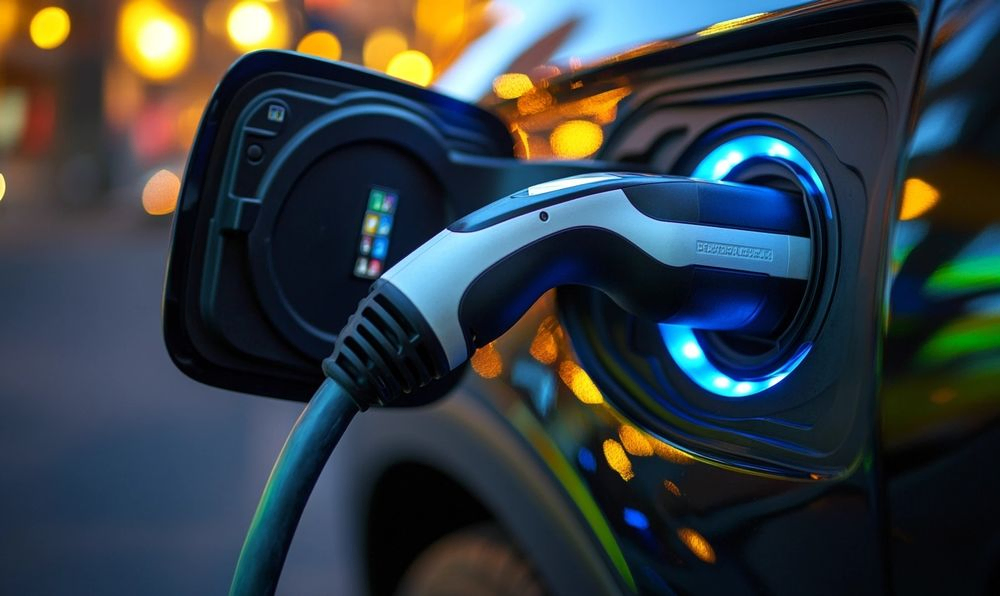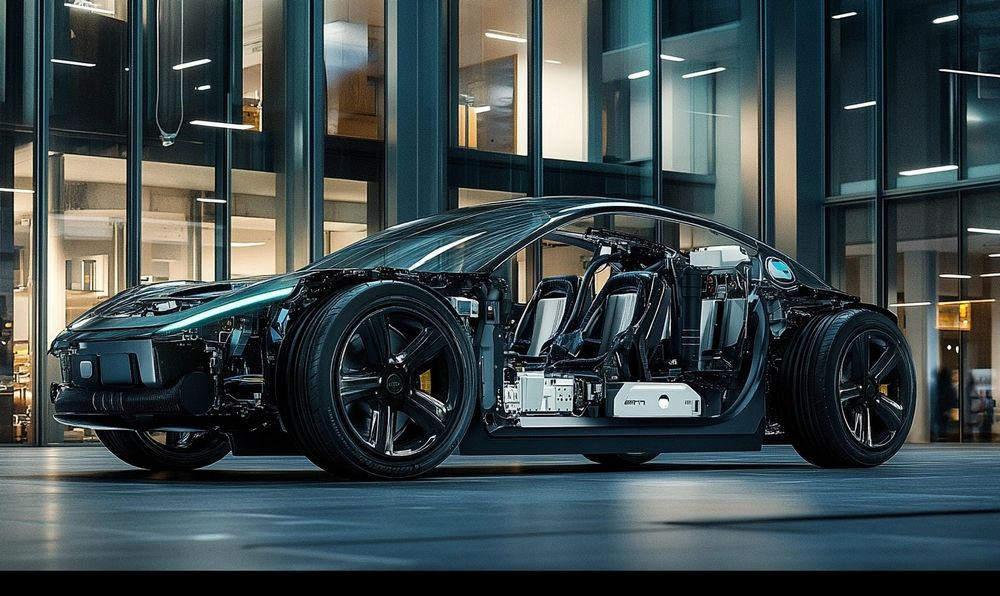Welcome to the fascinating world of electric cars—an innovation arena transforming our roads and reshaping the transportation landscape as we know it. At the heart of this revolution lies battery electric vehicles (BEVs), which are environmentally friendly and represent the pinnacle of electric car technology. With their zero-emissions profile and advanced performance features, BEVs are taking center stage in the automotive industry.
The BEV evolution has been nothing short of remarkable. From the early days of electric vehicle history, where range anxiety and charging infrastructure were significant barriers, to today’s cutting-edge models boasting extensive ranges and an ever-expanding network of fast chargers, we are witnessing a seismic shift in consumer attitudes and technological capabilities. This comprehensive BEV overview will guide you through the milestones that have defined electric cars and pave the way for their future.
Exploring this topic deepens your understanding of electric vehicles and highlights the incredible advancements propelling us toward a sustainable transport future. As we dive deeper into the mechanics and benefits of battery electric vehicles, you’ll gain insights into how this technology is reshaping our daily lives, contributing to a cleaner planet, and setting the stage for what’s next in the world of mobility.

The History of Electric Vehicles: A Journey Through Time
Early Innovations
Did you know that electric cars have been around since the 19th century? It’s true! The first electric vehicle (EV) ran on batteries in the 1830s. Can you imagine someone cruising the streets in an electric carriage back then? This was long before gas guzzlers took over the roads. It’s a bit of a futuristic vibe, right?
Electric Car Technology Takes Off
Fast forward to the late 1800s and early 1900s, we saw a surge in electric car technology. Car manufacturers were racing—who could create the best battery electric vehicles (BEVs)? Some even claimed these cars were superior to their gas counterparts. However, as gasoline became more accessible, interest in BEVs waned.
The Rise and Fall of BEVs
By the 1920s, electric vehicle history took a downturn. Gasoline and the internal combustion engine dominated the market. Can you picture leaving behind the solar-powered future for a noisy gas-powered monster? It was a tough pill for early EV enthusiasts to swallow.
- 1830s: First functioning electric vehicle.
- 1890s: Electric taxis hit the streets.
- 1920s: Technological advances overshadowed by gasoline.
The BEV Evolution
But don’t count out electric cars just yet! The evolution of BEVs began to pick up again in the late 20th century. The oil crisis got people thinking. What if there was a cleaner, cheaper alternative? That’s when manufacturers revisited battery electric vehicles. The hype was real!
Modern Electric Cars and Their Impact
Now, we’re in a renaissance of sorts for electric cars. With improved technology, modern BEVs are more efficient, stylish, and sustainable than ever. Plus, with a growing awareness of our carbon footprint, who wouldn’t want to make the switch? It’s like trading in your old flip phone for the latest smartphone—the difference is undeniable!
A Bright Future Ahead
The future seems bright as we examine the electric car technology landscape. Are you ready to be part of the electric journey? Sharing the road with a BEV isn’t just about greener living; it’s about being part of something bigger—a sustainable world, one charge at a time! Let’s embrace the electric dream together and steer towards a cleaner tomorrow.

What Are Battery Electric Vehicles (BEVs) and How Do They Work?
Understanding the Basics
Alright, let’s break it down! Battery electric vehicles (BEVs) are electric vehicles that run entirely on electricity. There’s no gasoline or diesel involved. Instead, they rely on a big ol’ battery pack that powers an electric motor. Think of it as your car getting energy from a super-sized phone charger. Pretty cool, right?
The Heart of the BEV
Your typical BEV has several key components:
- Battery Pack: This is where all the magic happens! It stores electrical energy.
- Electric Motor: This is what drives the wheels. It’s quiet but oh so powerful.
- Charging Port: Pop it in here to recharge, and voila!
When you step on the accelerator, the battery releases energy to the electric motor, making your car zoom forward without a single puff of exhaust. Feel that thrill!
A Glimpse at BEV Evolution
Now, let’s talk about how these babies came to be. The history of electric vehicles dates back over 100 years! But it was the BEV evolution in recent decades that set things ablaze. With advancements in electric car technology, the earlier models that could barely make it down the block have transformed into sleek, sporty machines that can go hundreds of miles on a single charge.
Here’s a quick snapshot of the evolution:
- Early Days: Simple designs with primary batteries.
- 1970s-90s: Growing interest but limited range and performance.
- 2000s: Lithium-ion batteries hit the market, boosting performance.
- Present Day: High-performance BEVs that rival traditional cars.
Why Choose a BEV?
You might be wondering, “Why should I go electric?” Well, let me lay it out for you:
- Cost-effective: Save on fuel and maintenance.
- Environmentally Friendly: Zero emissions make Mother Earth smile.
- Performance: Instant torque means quick acceleration!
So, if you’re debating whether to hop on the electric bandwagon, remember that every charge is a step towards a greener future!

BEV Overview: Key Features and Components of Electric Cars
What Makes Up a BEV?
When you think about battery electric vehicles or BEVs, you might picture a sleek car sweeping silently through the streets. But what’s going on under that polished exterior? Let’s break down the essential components of these innovative machines.
The Heart of the Matter: The Battery
The battery in a BEV is its lifeblood. Picture it as your car’s fuel tank. However, instead of burning fuel, it stores electricity. Without a battery, an electric vehicle is like a fish out of water—lifeless!
- High-capacity lithium-ion batteries are standard, providing ample range.
- These batteries are designed for quick recharging and longevity.
- Battery management systems help optimize performance and lifespan.
Electric Motors: The Power Behind the Wheel
Now that we’ve covered the battery meet the electric motors—the muscle of a BEV! They convert that stored electricity into mechanical power that moves the vehicle. They are the driving force, giving BEVs instant torque you can immediately feel!
With fewer moving parts than traditional engines, electric motors are more efficient and require less maintenance. Isn’t that a perk?
Charging Systems: Fueling the Future
How do you recharge a BEV? Simple! Using charging stations scattered throughout the landscape. It’s a bit like plugging in your phone, right? Here’s a quick look:
- Home charging: Plug it in overnight, like a cozy bedtime for your car.
- Public charging stations: Quick top-ups on road trips, designed for speed.
- Fast chargers: Get a significant charge in just minutes! Perfect for the impatient.
Advanced Tech: The Brain of Electric Cars
What’s a BEV without some amazing techno-wizardry? Electric car technology features advanced systems for navigation, safety, and efficiency. Imagine having a co-pilot that’s super smart and keeps you safe. Cool, right? Some key tech features include:
- Regenerative braking: Harnesses energy while slowing down, extending your range.
- Smart charging: Optimizes charging schedules based on electricity rates.
- Connected services: Make your drive seamless with in-car apps and updates.
So, next time someone asks about the features of a BEV, you can give them the lowdown—just like you would on a shiny new gadget you adore!

The BEV Evolution: Advancements in Electric Car Technology
Ready to dive into the exciting world of battery-electric vehicles? It’s like stepping into a sci-fi movie, except this is real life! Over the last few years, we’ve seen incredible advancements in electric car technology. Buckle up! Let’s explore how these innovations are driving us into the future.
From Humble Beginnings to High-Tech Rides
When you think about the history of electric vehicles, it can feel like watching an origin story unfold. Remember those boxy, slow electric cars that struggled to make their mark? Fast forward to today, and it’s a whole new ball game!
Modern battery electric vehicles boast:
- Exceptional range
- Quick charging capabilities
- Sleek designs and features
- Advanced safety systems
Battery Technology: Powering the Future
One of the key players in the evolution of BEVs is battery technology. Can you believe that today’s batteries are way lighter yet more powerful? It’s like comparing a featherweight to a heavyweight champion! Enhanced battery packs allow for longer trips, making EVs more practical than ever.
Here’s a fun fact: modern electric cars are adopting fast-charging technology similar to what your smartphone uses. Imagine filling up your car while taking a quick coffee break—that’s already happening!
Fun Features that Woo Us
Let’s talk about some cool features. Did you know many new battery electric vehicles come with intelligent driving assistants? They can autopilot for you! Some even have built-in entertainment systems that make your commute feel like a joyride.
Here’s a peek at some standout features:
- Autonomous driving capabilities
- Intuitive touchscreen interfaces
- Real-time diagnostics and updates
- Customized driver profiles
Isn’t it exciting to see how far we’ve come? The BEV overview isn’t just about the cars; it’s about the lifestyle changes they usher in. Imagine a world where charging your vehicle is as easy as charging your devices—now that’s the dream!
So, whether you’re contemplating switching to an EV or just curious about the BEV evolution, there’s no denying electric vehicles are rapidly reshaping our roads and our lives. Are you ready to join the electric revolution?
Types of Electric Vehicles: Beyond Battery Electric Vehicles
Exploring Different EV Types
When you hear “electric vehicles,” do you think only of battery electric vehicles (BEVs)? It’s an easy assumption, but there’s much more in the electric car universe! Let’s take a fun little journey through the various types of electric cars and uncover some fascinating options.
Plug-in Hybrid Electric Vehicles (PHEVs)
First up, we have Plug-in Hybrid Electric Vehicles (PHEVs). Imagine having the best of both worlds. These cars allow you to drive on electric power for shorter trips and switch to gasoline for longer adventures. It’s like having a backup plan built right into your car!
Here’s how they stack up:
- Electric range: Typically 20-50 miles on a single charge.
- Gasoline engine: Kicks in once the electric battery is drained.
- Great for city dwellers who need versatility.
Hybrid Electric Vehicles (HEVs)
Next, let’s talk about Hybrid Electric Vehicles (HEVs). These are the “quiet achievers” of the car world. They use a gasoline engine and an electric motor, but you don’t have to plug them in. The battery charges while you drive, so it’s like magic—but with wheels!
Some interesting points about HEVs:
- No external charging is needed—perfect for low-maintenance drivers.
- Better fuel economy than traditional vehicles.
- Suitable for those easing into the world of electricity.
Fuel Cell Electric Vehicles (FCEVs)
Finally, here’s a twist: Fuel Cell Electric Vehicles (FCEVs). Think of these cars as advanced electric devices. They run on hydrogen and emit only water vapor! They’re super clean and have rapid refueling times, making them an exciting option for eco-warriors.
What makes FCEVs unique?
- Fast refueling—similar to gas cars.
- Long driving range—often comparable to or even better than BEVs.
- It’s still a bit niche but growing in popularity!
So, the next time someone mentions electric vehicles, remember there’s a whole spectrum of options beyond battery electric vehicles. Each type has its charm and benefits, making the electric vehicle world an exciting place to explore!
The Environmental Impact of Electric Cars: A Greener Future
Why Go Green with Electric Cars?
Electric cars aren’t just cool gadgets but a step toward a greener planet. Imagine driving a vehicle that doesn’t puff out harmful gases. Pretty nice, right? You can contribute to less air pollution with battery electric vehicles (BEVs). It’s like breathing fresh mountain air instead of smoggy city air. Who wouldn’t want that?
Reducing Carbon Footprint
Did you know that traditional vehicles emit tons of carbon dioxide every year? Switching to BEVs can significantly lower this impact. Studies show that using electric cars can reduce carbon emissions by up to 70% compared to gasoline cars. That’s like planting a forest right in your driveway!
The Energy Shift
And here’s something fascinating: while electric vehicle history often focuses on the tech, the real game-changer is how we power these cars. Many electric car technology systems are moving towards renewable energy sources like wind and solar. Imagine powering your vehicle with sunlight! It’s possible, and it makes a big difference.
Benefits of Battery Electric Vehicles
So, why should you care about BEVs? Here are a few reasons:
- No tailpipe emissions
- Lower operating costs
- Less noise pollution
- Government incentives for greener choices
Creating a Sustainable Future
Choosing a BEV is like voting for a cleaner planet with every mile you drive. Imagine the future where our kids don’t have to wear masks because of air pollution. That’s the dream, and it’s achievable through electric cars. Every little step counts!
The Ripple Effect
When more people drive electric cars, it prompts a shift in the market. Businesses will then focus on clean energy, leading to job creation in sustainable sectors. It’s a win-win situation for everyone. Think of it like a stone dropped in water; the ripples can make big waves!
By embracing BEV evolution, you’re not just upgrading to a new vehicle but joining a movement. You’re part of a green revolution. Who knew a car could be more than just a way to get from point A to B?
Challenges and Opportunities in the BEV Market
What Holds Us Back?
The battery electric vehicles (BEVs) market has been on fire lately, but not everything is smooth sailing. There are some pretty hefty challenges facing this exciting sector. For starters, charging infrastructure is a biggie. Imagine having a smartphone with no access to chargers! That’s how consumers feel about electric car technology right now. They love the idea, but where’s the juice?
The Price Tag Dilemma
Another stumbling block is the price. Yes, battery electric vehicles can have a steep sticker price. Not everyone can shell out that kind of cash—similar to how some might hesitate to buy a luxury gadget. The upfront cost can make potential buyers scratch their heads. However, prices are slowly dropping with more models rolling out and advances in BEV evolution.
Opportunities on the Horizon
But it’s not all doom and gloom! The growth potential is gigantic. As technology improves and becomes more affordable, we’ll see a surge in BEV evolution. Consider this: as electric vehicle history tells us, the more people understand the benefits, the more they want in. Think of it as jumping on a trend—everyone wants to ride the wave of the future!
- We are expanding charging networks across towns and cities.
- Falling prices as technology advances.
- Government incentives for buyers.
The Green Wave
The push for sustainability is another golden opportunity. Many folks are waking up to the environmental impact of their choices. Driving a battery electric vehicle is like voting for a cleaner planet daily. It’s an emotional appeal that resonates deeply with eco-conscious consumers.
Driving Innovation
And let’s not forget innovation! Automakers invest heavily in electric car technology, adapting designs and features that attract buyers. Have you ever heard of range anxiety? That’s where a little innovation can go a long way—better batteries equal longer trips without worry!
Like the electric vehicle history journey, we’re in a dynamic phase where the balance between challenges and opportunities boosts excitement. The road ahead may be bumpy, but it’s loaded with possibilities! Who wouldn’t want to hop on that ride?
The Future of Electric Vehicle Technology: Trends to Watch
Rising Popularity of Battery Electric Vehicles
Have you noticed more electric cars on the road lately? It’s not a coincidence! The rise of battery electric vehicles (BEVs) is transforming how we think about transportation. But what makes them so appealing?
- Zero tailpipe emissions
- Lower operating costs compared to petrol or diesel vehicles
- Government incentives are a cherry on top!
With constant advancements in electric car technology, we’re witnessing a revolution. Just think about it: a few years ago, the idea of driving an electric car felt like something out of a sci-fi movie!
BEV Evolution and Charging Solutions
Have you ever wondered how long it takes to charge a BEV? The evolution of BEVs has brought us improvements in charging stations. The focus is now on making charging as quick and convenient as stopping for coffee. Fast chargers can fill up your battery in under an hour!
Imagine being able to recharge your car while grabbing a snack. The growth of home charging solutions means you can wake up daily to a full tank. Sounds convenient, right?
Innovations in Performance and Range
When it comes to electric vehicle history, we’ve come a long way! The range of electric cars is growing significantly. Most modern BEVs now offer 200 to 300 miles on a single charge! That’s like driving from Los Angeles to San Francisco without stopping! Use that energy wisely!
Here’s a quick look at some incredible innovations:
- Enhanced battery technologies
- Lightweight materials for better efficiency
- Intelligent management systems for optimal performance
What’s Next?
So, what’s on the horizon for electric vehicles? More tech-savvy features are popping up, like auto-pilot and intelligent charging options. We’re also likely to see a boost in sustainable manufacturing practices. Wouldn’t it be great if our cars were built with as much care for the planet as they are for us?
The future of electric cars is bright, and it’s heading your way faster than you think! With advanced electric car technology and a push toward sustainability, the road ahead is not just electric—it’s electrifying!
Conclusion
In conclusion, the journey of battery electric vehicles (BEVs) has transformed the automotive landscape significantly over the years. From their early inception to the advanced electric car technology we see today, the evolution of BEVs showcases remarkable innovation and adaptation. Understanding electric cars means appreciating the technology and recognizing the socio-economic factors driving their popularity.
Electric vehicle history highlights a persistent quest for sustainable transportation solutions, influenced by the need to reduce greenhouse gas emissions and dependence on fossil fuels. Today, thanks to the advancements in BEV evolution, consumers are presented with diverse options. From sleek designs to high-performance capabilities, modern electric cars are reshaping how we think about mobility.
As we look to the future, the continued investment in electric vehicle infrastructure and technology promises an even more exciting era for BEVs. Whether you are considering switching to an electric car or wish to stay informed, understanding the ins and outs of battery electric vehicles can empower your choices in this rapidly changing market. Embrace the electric revolution and join the movement towards a more sustainable world!
Frequently Asked Questions (FAQs)
What are battery electric vehicles (BEVs)?
Battery electric vehicles, or BEVs, run solely on electric power stored in batteries. They produce zero tailpipe emissions and are renowned for being eco-friendly compared to traditional gasoline vehicles.
What is the BEV evolution?
The BEV evolution refers to the development and advancements in battery electric vehicles. Initially introduced in the 19th century, BEVs have progressed significantly with innovations in electric car technology, battery efficiency, and charging infrastructure.
How does electric car technology work?
Electric car technology primarily relies on electric motors powered by rechargeable batteries. These vehicles convert stored electrical energy into mechanical energy to drive the wheels, making them both efficient and environmentally friendly.
What is a BEV overview?
A BEV overview provides a comprehensive look at battery electric vehicles, covering their benefits, such as reduced emissions and operational savings, the latest developments in charging technology, and vehicle models available today.
What is the history of electric vehicles?
The history of electric vehicles dates back to the early 1800s, with various innovators contributing to the development of electric motors and battery technology. Over the decades, electric cars faced challenges but have surged in popularity in recent years, driven by technological improvements and a heightened focus on sustainability.
What are the benefits of owning a battery-electric vehicle?
Benefits of owning a battery electric vehicle include lower operating costs, reduced maintenance requirements, zero emissions during operation, and often tax incentives or rebates from governments promoting sustainable transport.
How long does it take to charge a BEV?
Charging time for a BEV can vary depending on the charger type: Level 1 chargers (standard home outlets) can take 8-12 hours, Level 2 chargers can take 4-6 hours, and fast chargers can provide an 80% charge in about 30 minutes.
What types of electric vehicles are available?
Electric vehicles can be categorized into different types: Battery Electric Vehicles (BEVs), Plug-in Hybrid Electric Vehicles (PHEVs), and Hybrid Electric Vehicles (HEVs). BEVs run entirely on electricity, while PHEVs have a combustion engine and an electric motor.